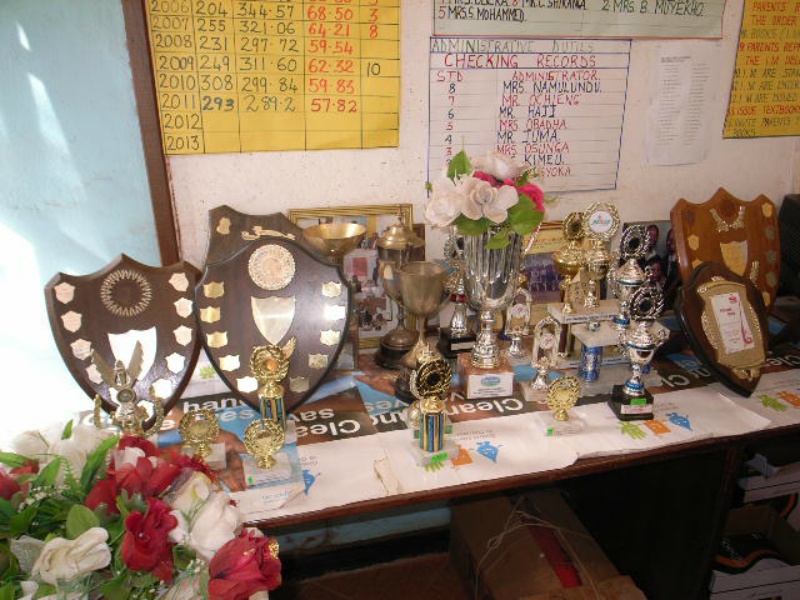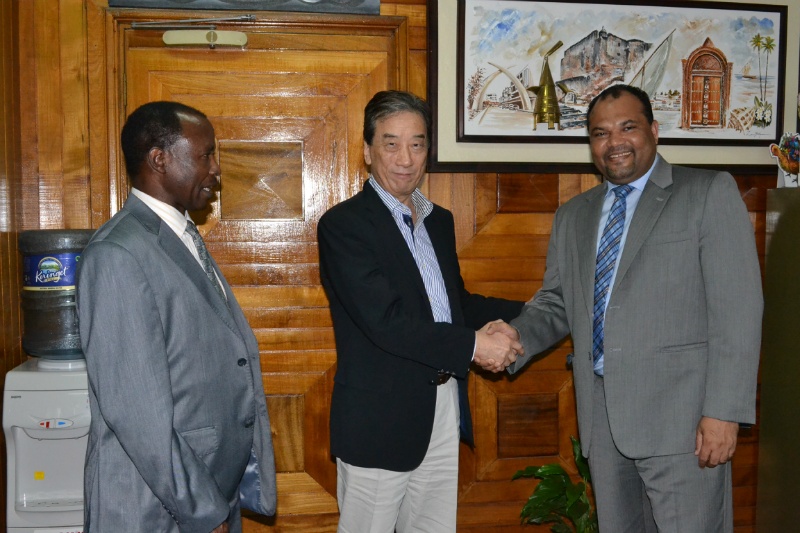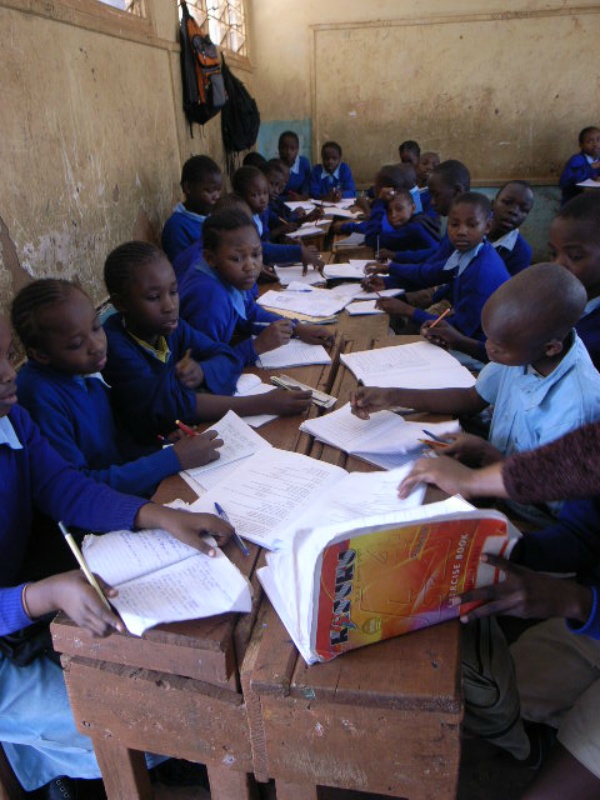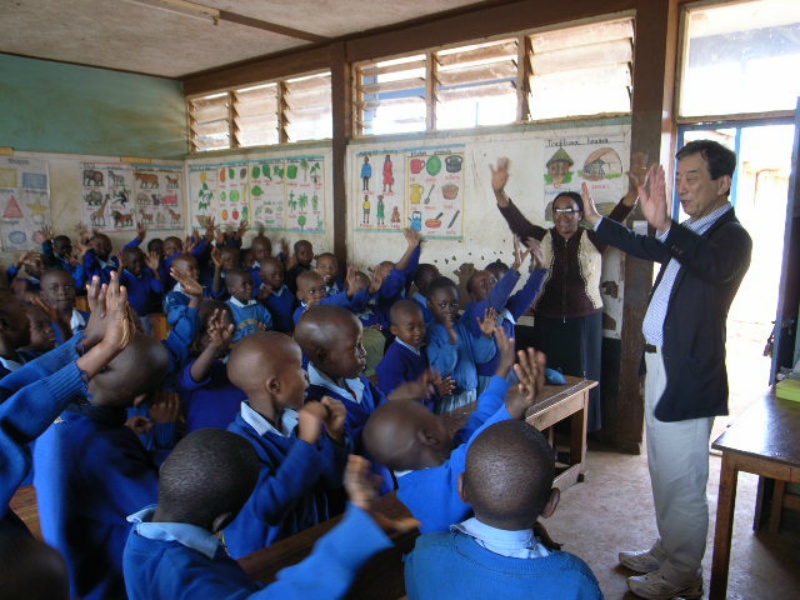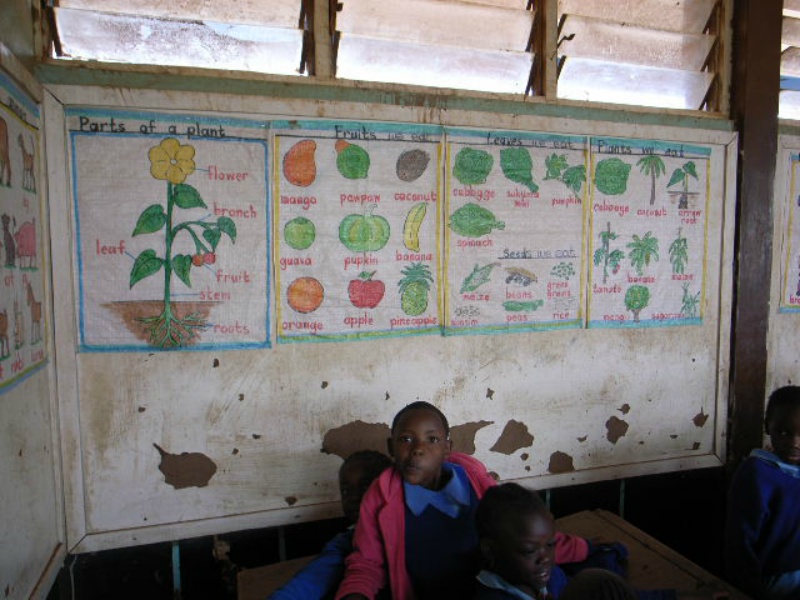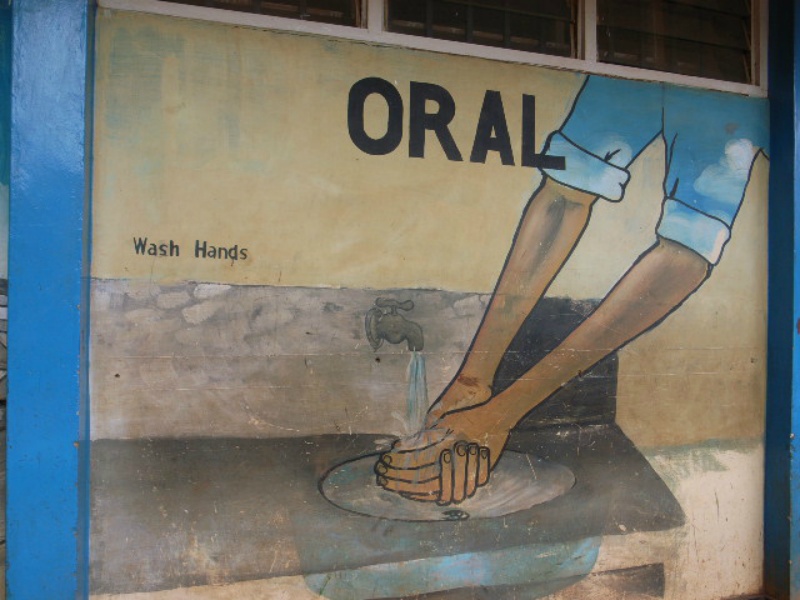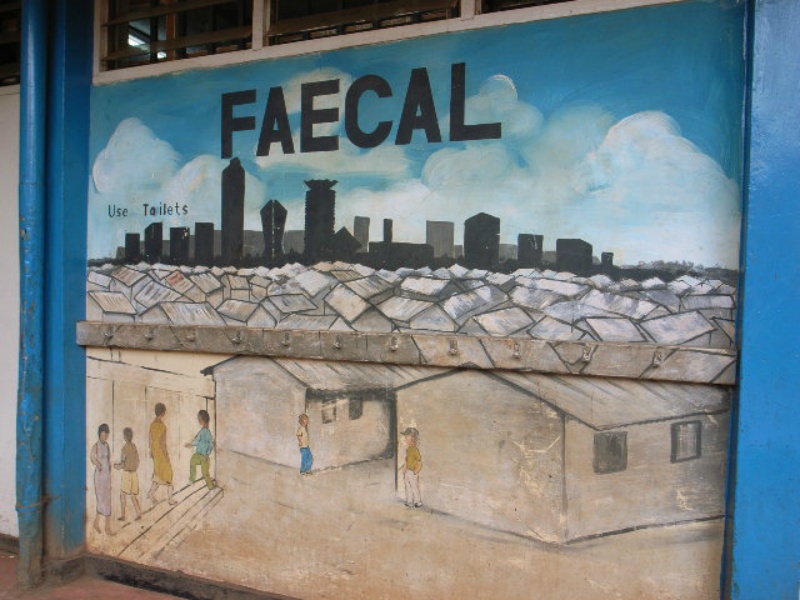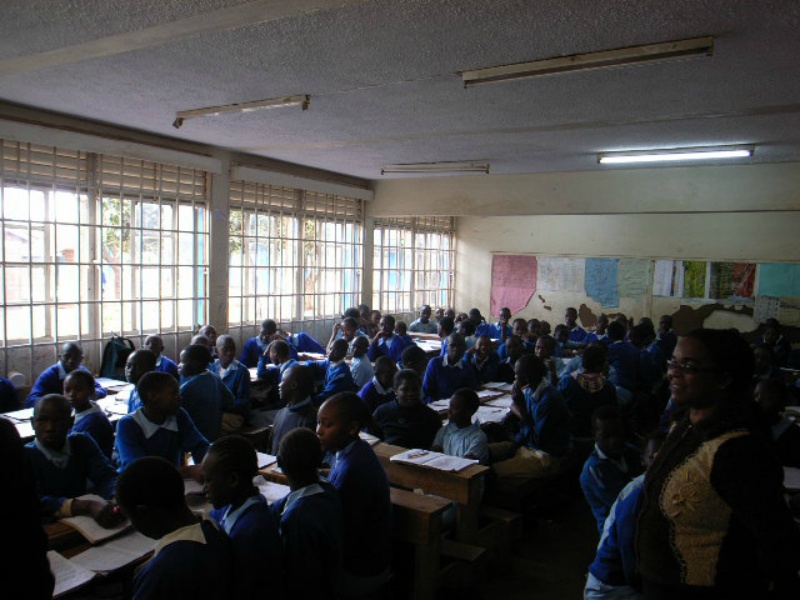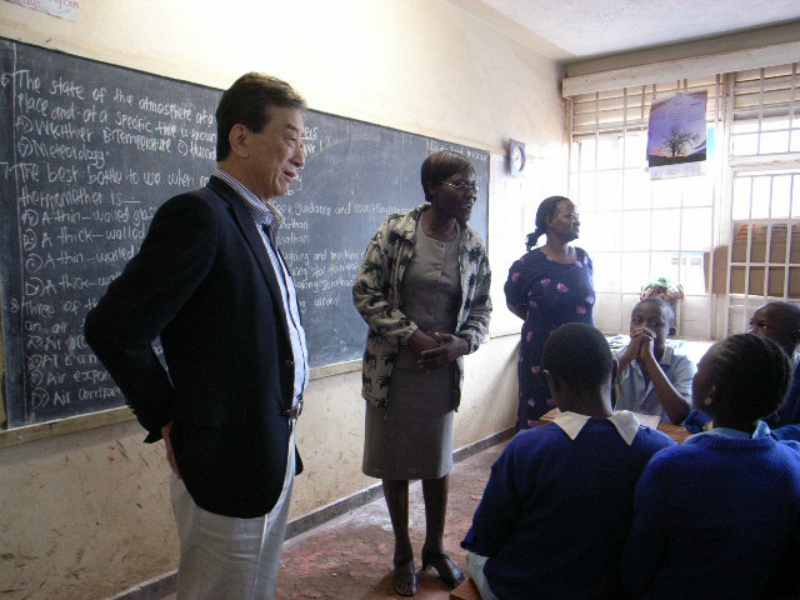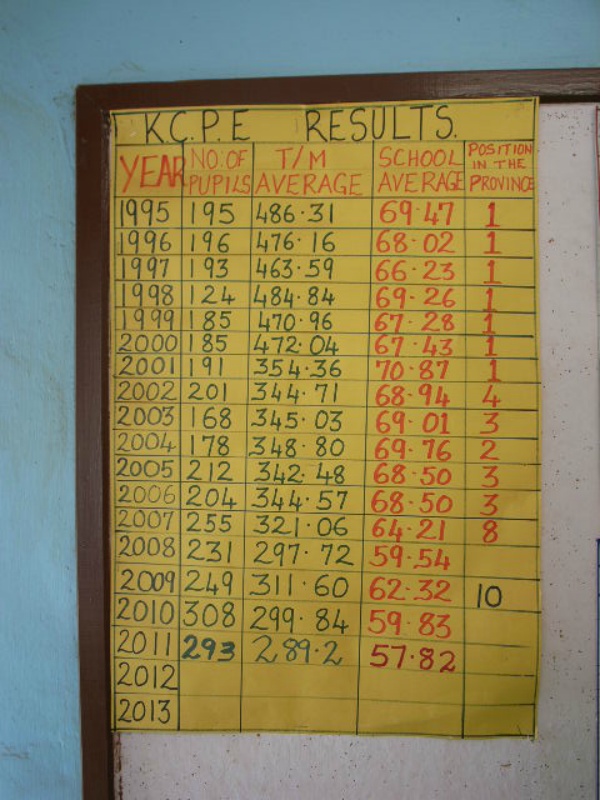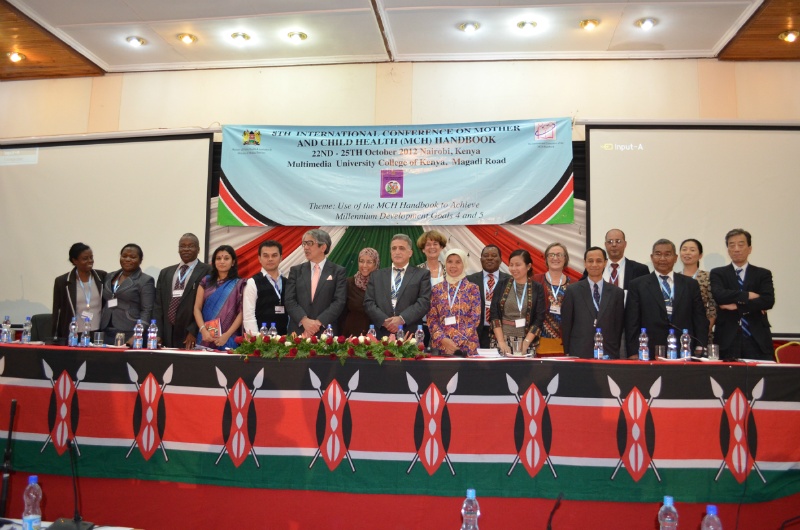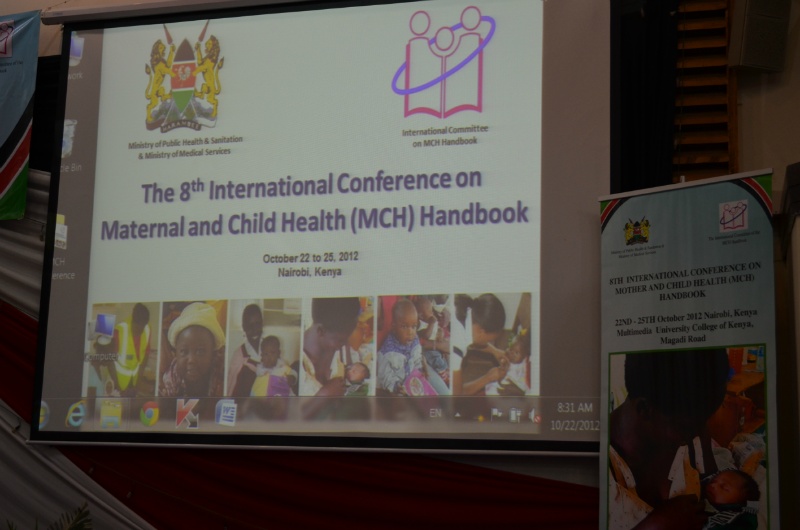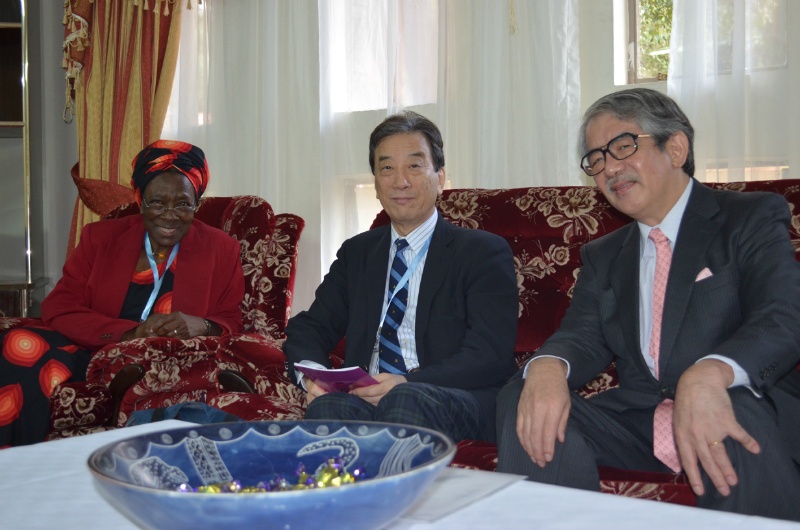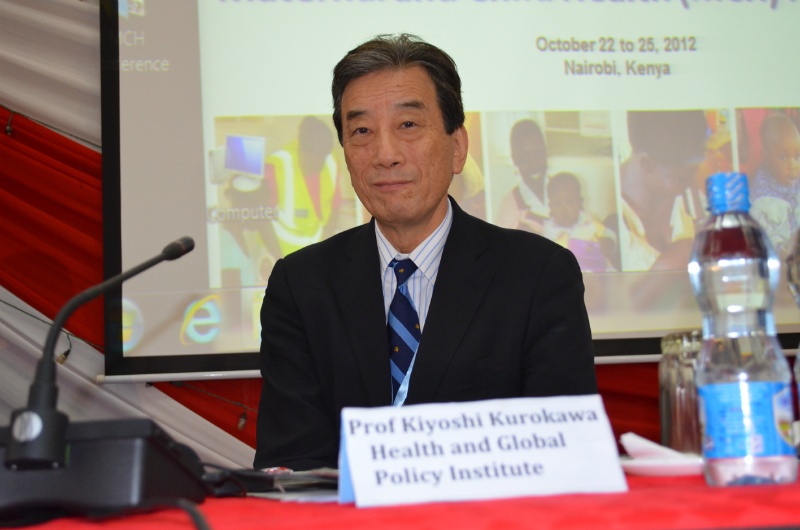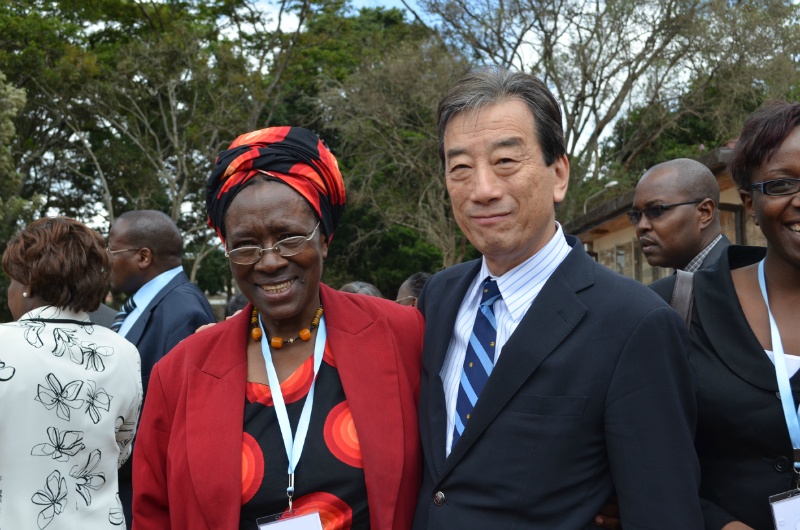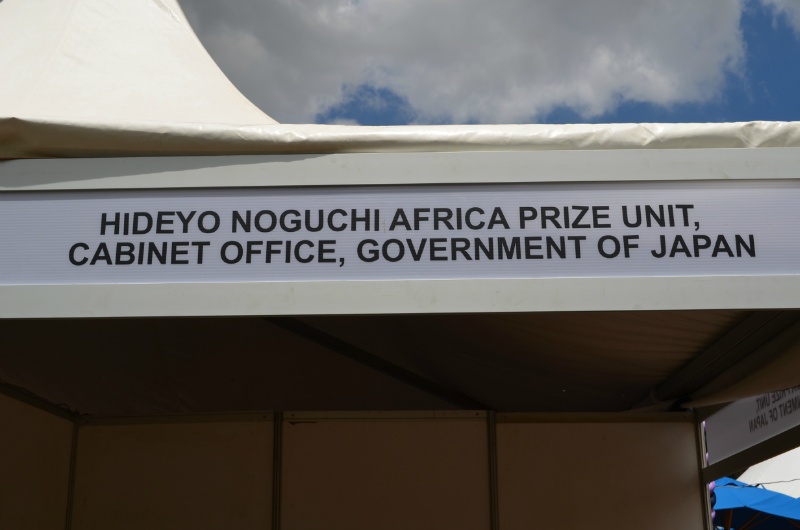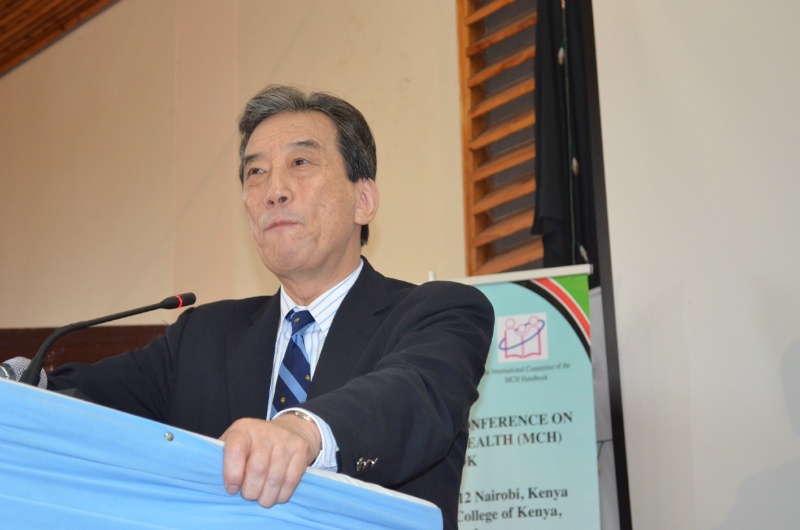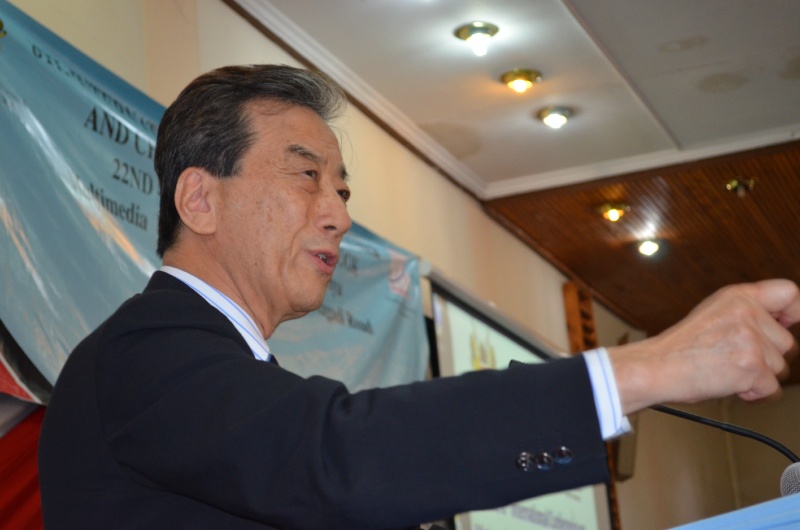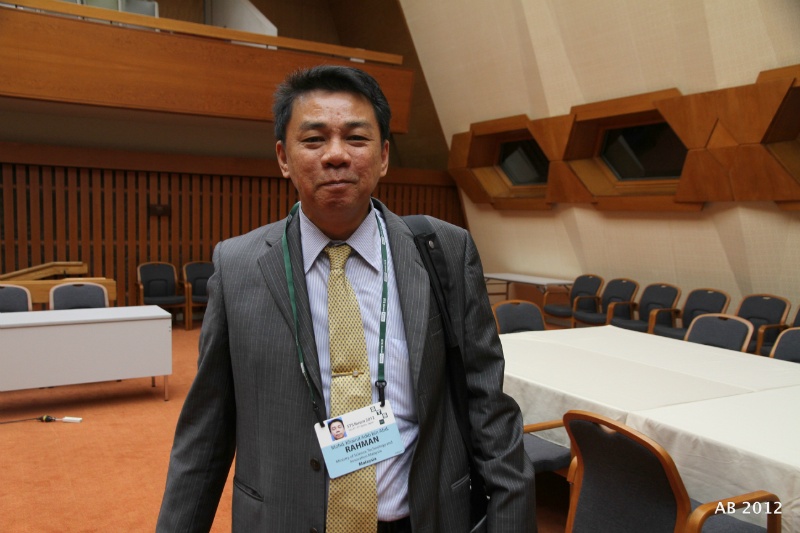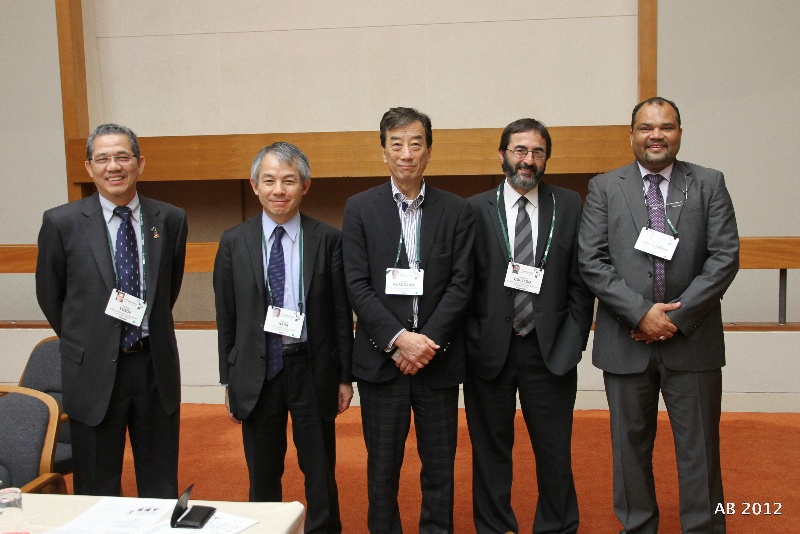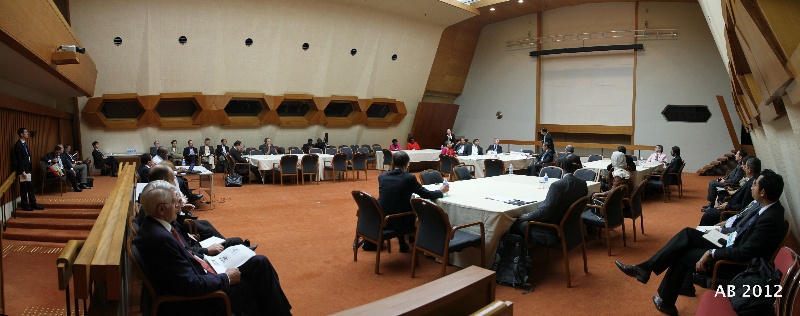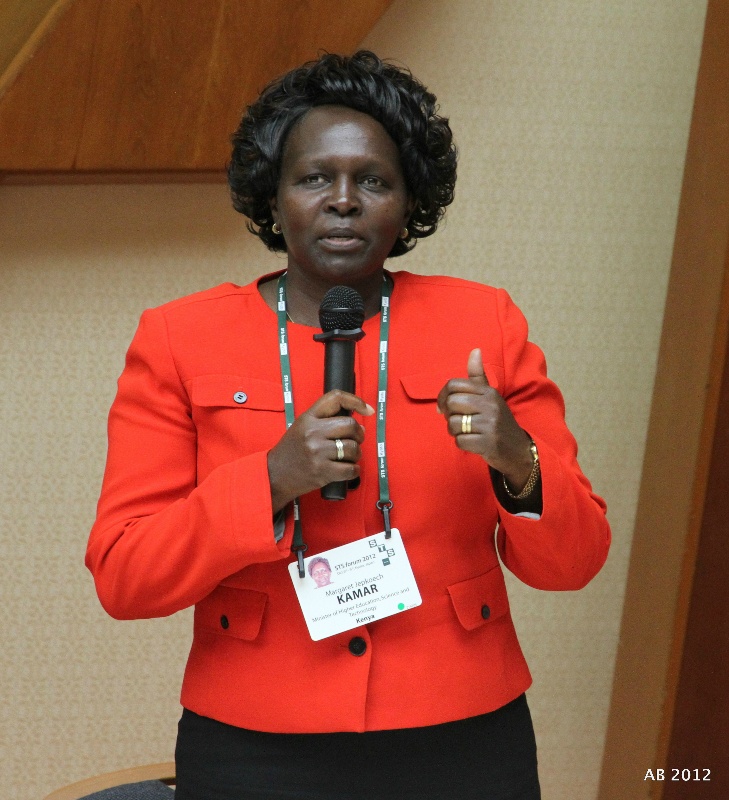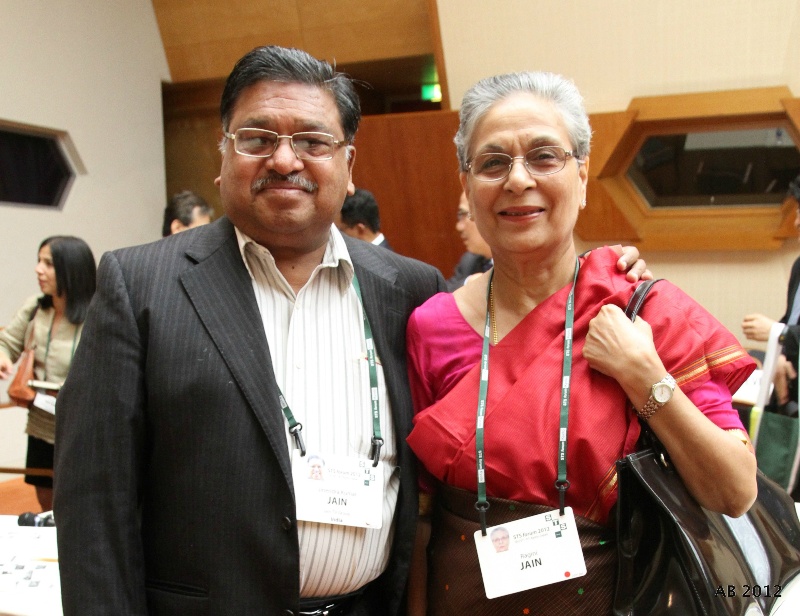Day three in Nairobi. Today, as I took no part in the conference, I visited the Olympic School(1) accompanied by a member of UZIMA. This is a public school for children of Kibera slum and located at an edge of the slum, which is known as the ‘largest slum in the world.’
When I was WHO Commissioner six years ago (June 2006), I visited this place and was extremely moved. As one of the public elementary schools in Kenya (they have grades 1-8 and there are about 200 schools in total), it attained the highest grade in Kenya (actually the top in the country; although slightly dropping recently, still in the top 10), and this result enabled the students to progress to public high school. The top ten percent of students with the highest grades can continue their studies in the public high school (4 academic years).
Over last 10 years, the number of students enrolled increased from about 1,700 to 3,000 and the twenty-six (26) teachers seem extremely busy. With the class full of students, one textbook is shared among six to eight students (the textbooks cannot be brought back home, which is in the slum district) and they study together. Some of the rooms are very dark as there are no lights, but they are still packed with students. One class has approximately seventy to ninety students.
Lunchtime is about forty minutes and the lunch is boiled corn (maize). I tried a bit myself, and could imagine how tough the situation was for the students and was amazed at how they coped with it. To understand that this kind of world exists through experience is certainly important.
When I visited some of the classrooms I was greeted by all the students and their teachers. I could notice that they were disciplined as well.
Since we could not immediately find visitor’s notebook in the principal’s office of 2006 when I visited six years ago, I wrote a similar message again on this occasion. Whenever the young people I know go outside of Japan and to Africa and e-mail or tweet “Off to Nairobi…” I recommend them to visit this school. A few of such young people I know read my entry of 2006.
What I wrote there was the following:
Most moving experience of my life
I saw the future of the nation
When you have the opportunity to go to Kenya, I suggest you to visit the Olympic School.
In the afternoon I visited the CEO of NCST (National Council of Science and Technology) of Kenya, Prof. Shaukat Abdulrazak (1). The chairman of the board of directors, Prof. Vasey Mwaja, was also present, and we had a pleasant chat for about an hour. Both of them once studied and lived in Japan and one can feel their passion for Japan. This is the process that is most valuable for international contribution.
GRIPS National Graduate Institute for Policy Studies, one of the bases of my work, is a graduate school that encourages this process.
My stay in Nairobi is almost over. In a few hours I will be leaving the hotel and heading back home.
